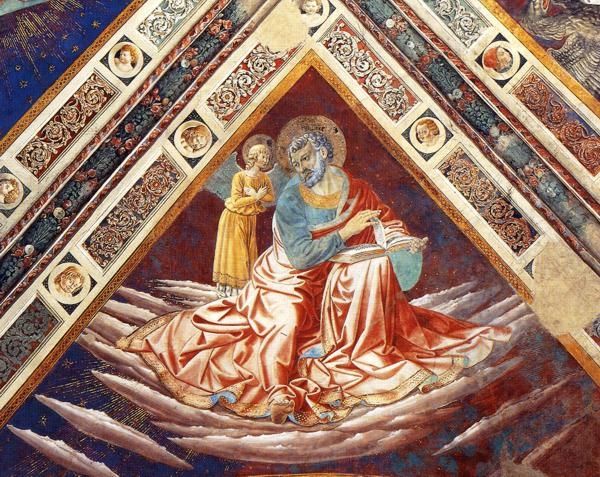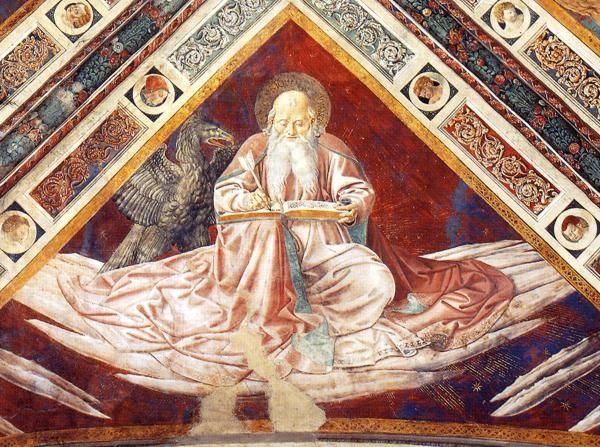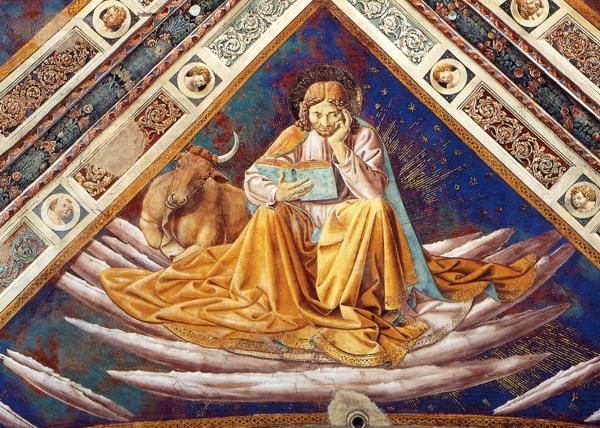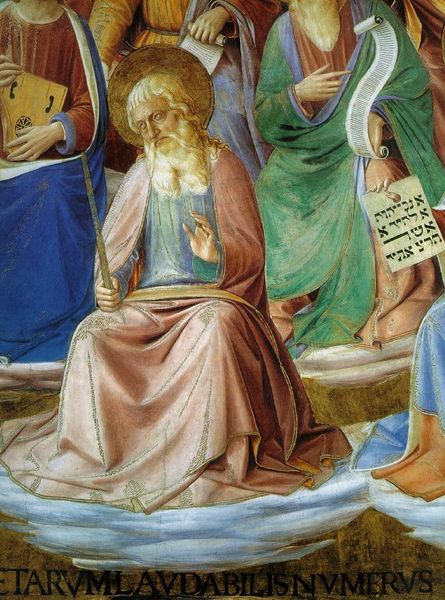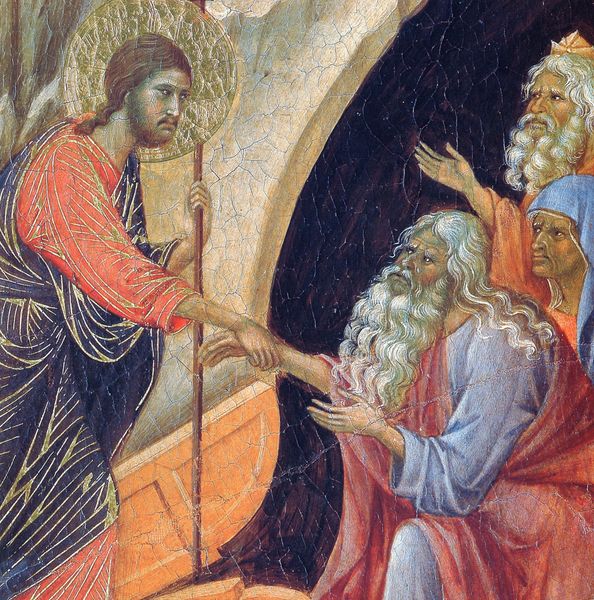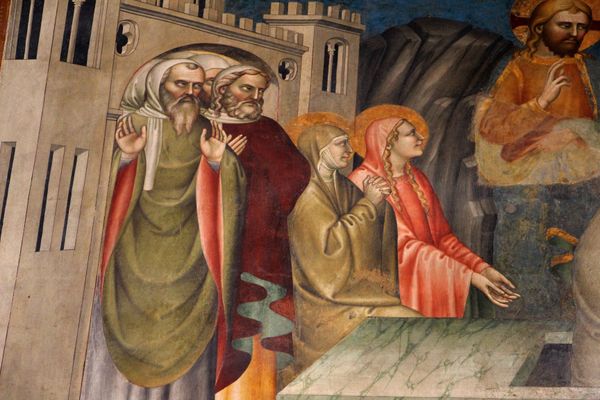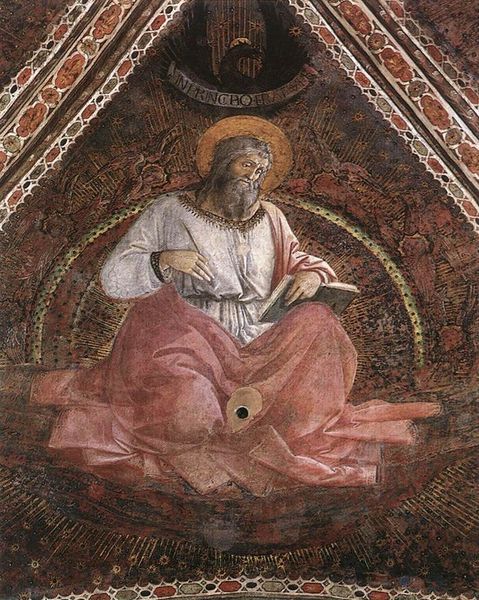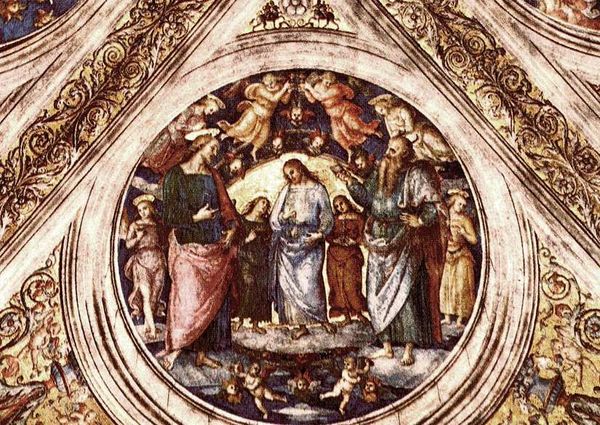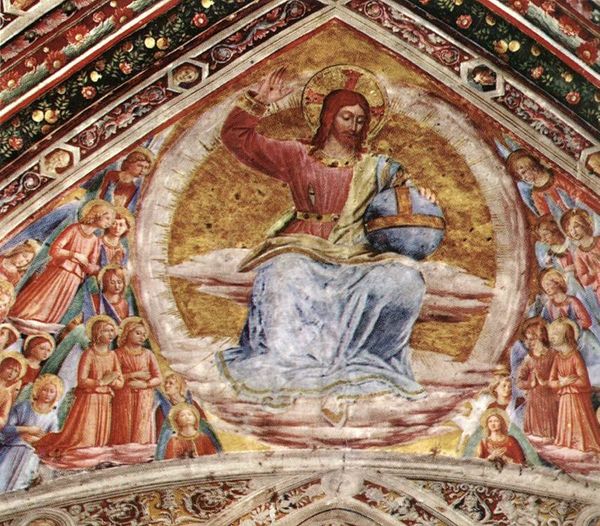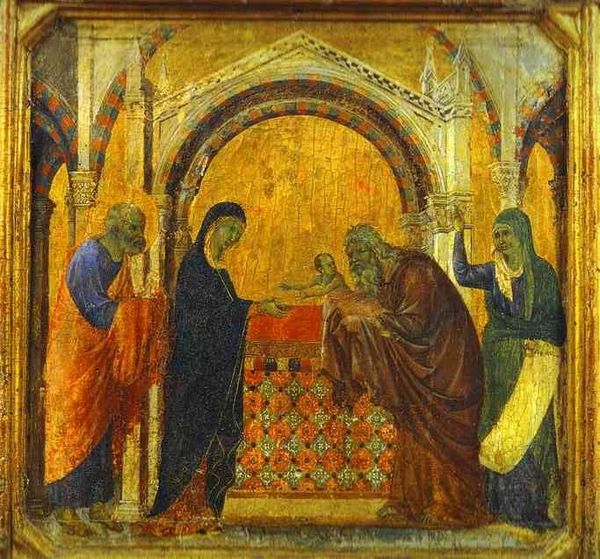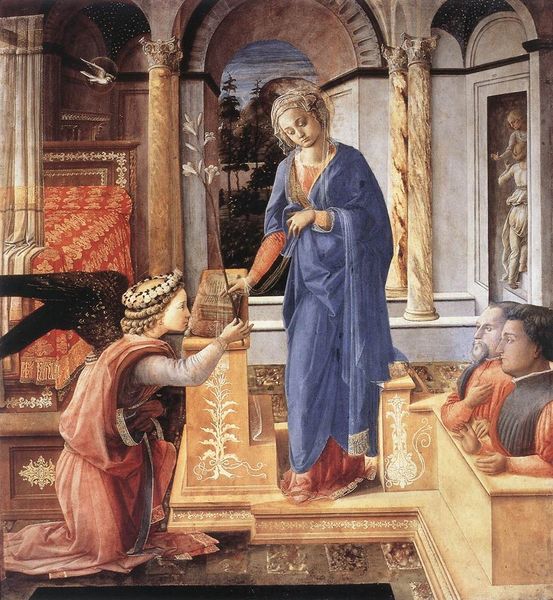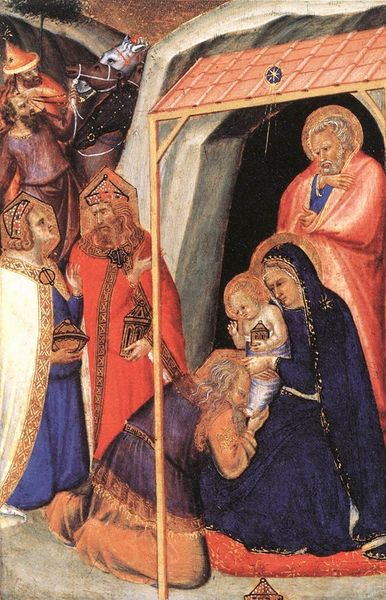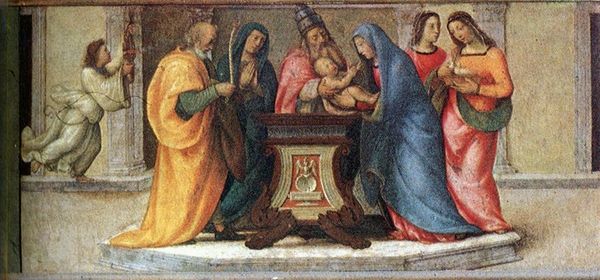
painting, fresco
#
portrait
#
narrative-art
#
painting
#
figuration
#
fresco
#
11_renaissance
#
oil painting
#
christianity
#
genre-painting
#
history-painting
#
academic-art
#
italian-renaissance
Copyright: Public domain
Curator: We’re looking at a section of a fresco cycle, specifically a detail depicting St. Mark from "The Four Evangelists", crafted by Benozzo Gozzoli around 1465. It’s an Italian Renaissance piece. Editor: It feels very still, doesn’t it? The lion looks more like a very large pet cat. And the saint himself seems so focused; completely self-contained. Curator: Precisely! Gozzoli masterfully employs color here. The gentle pastel robes create a serene contrast against the deep azure sky filled with cloud striations and radiating light, a semiotic reference to divine inspiration. Editor: Thinking about the context, how would this function for people at that time? Were they as literate and well-versed in religious iconography as we sometimes assume? Curator: A good question! While literacy was limited, imagery served a critical pedagogical role. The lion, a traditional symbol of St. Mark, would have immediately identified the figure, even to an illiterate viewer. Consider it a visual shorthand of cultural and religious identity, intended for didactic means. Editor: That halo is quite the identifier too. Looking at the texture and technique of this fresco, one gets the feeling of immense care in how paint is layered— almost glazed. And the geometric compartmentalization of space in the top and side bordering… quite unique. Curator: Notice the modeling of the face and hands, the deliberate naturalism. Gozzoli integrates Renaissance ideals of humanism with traditional religious themes. This interweaving can also be understood through post-structuralist methods in art; where visual representation and signification collide and converge. Editor: It's also striking to observe where this scene would've resided – the grand Chapel. The scale, scope, the overwhelming beauty – there's an intentional manipulation of visual input going on that surely helped with the chapel's public messaging. Curator: A church being seen not only as a sanctum, but also a billboard of social expectations... Yes, understood perfectly! Editor: To look closer at how cultural institutions functioned in forming public opinion then... Well, so much more work still has to be done. Curator: Indeed, but on that note, our allotted time has nearly run out, giving us much food for thought and inquiry for further learning.
Comments
No comments
Be the first to comment and join the conversation on the ultimate creative platform.
